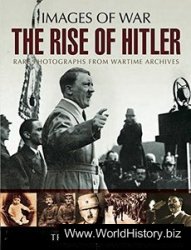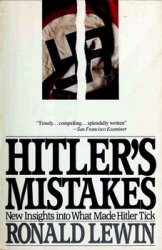While Warsaw Pact propagandists hammered home a clear message all across Europe, it remains much harder to define what US propagandists were trying to do. Instead of outlining utopian goals - as propaganda typically does - US propaganda remained primarily defensive. Americans thought that they had already developed the best society in the world. Their propaganda therefore lacked vision and tended to be mostly unappealing, dismissing other societies while extolling their own.
Such a lack of vision clearly slowed the development of US propaganda programs. For the first five years after the war, Washington had very little interest in cultural matters in Europe. US officials disputed cultural policy; they were skeptical about whether the promotion of American values and culture abroad was appropriate at all; and they remained indifferent to the implementation of cultural policy in postwar Europe. For example, media guidelines from the State and the War Departments to the division charged with the reconstruction of the German press often came late or were lost. If these directives trickled down to their point of destination, US information strategists in Germany disregarded them without informing their superiors in Washington, DC.
US propagandists in Europe were often confused about what they wanted. Many US information officials in Germany, for example, remained unwilling to tear down the icon of German music from its international pedestal, partly because they themselves admired it and partly because they were intimidated by Germany and its Kultur. Others, in contrast, were tremendously reluctant to make any concessions to the quality of Kultur, believing that such an acknowledgment would echo Joseph Goebbels’s propaganda tune that "Americans are money-hungry barbarians with no cultural life of their own." Such concessions, US propagandists feared, would enforce the Germans’ "national feeling" that their life and culture were superior to any other way of life. As a result, American officers’ definition of American "culture" - supposedly a viable alternative to fascist Kultur - remained fuzzy.
When US propaganda strategists in Washington finally designed their own cultural program in the early 1950s, everything they did and said was a response to Communist faultfinding, European anti-Americanism, and the Korean War. Because Soviet propagandists had already seized the initiative, their US counterparts had no choice but to follow suit. And, as we have seen, the parameters ofSoviet and East German Communist propaganda embraced Bildung (knowledge, education) and Kultur and ridiculed the absence of both in the United States. The effort to defy the criticism that the United States had no high culture and no tradition remained at the heart of US cultural propaganda in Europe throughout the Cold War.
The European charge that Americans lacked culture had been a standard fare of European anti-Americanism since the Revolution of 1776. The European obsession to eliminate everything "American" from contemporary values and terminology, and the refusal to see the United States as having a separate culture rather than being a shrill deviation from Europe, originated in the decades after the American Revolution. Because European
Criticism had such a long history, US officials in the 1950s found it difficult to counter it effectively.645 They designed a "Campaign of Truth" during the Korean War to refute Soviet propaganda and to show a "full and fair picture" of American society and culture. A few, such as Shepard Stone, a cultural diplomat in the early years of the High Commission in Germany, grasped that the United States had to focus on the positive in the history of transatlantic relations. A successful political partnership between Europe and the United States could flourish only if it was grounded on a cultural alliance as well.
US officials believed that, to revise Europeans’ unfavorable impressions of American culture, they needed to learn more about US academic and high cultural achievements. They needed to be reminded of their longstanding cultural relations with the United States, which had tied the two continents together for over a hundred years. The United States had to cease telling foreign audiences how to be more like Americans; instead, programs should reveal how much the country and Europe resembled each other on the cultural level.
These were the goals of all the institutions, information programs, and cultural exchanges created after 1950, such as the United States Information Agency (USIA) and the Fulbright program. They aspired to export American culture, including literature, music, art, and science abroad, while simultaneously stimulating academic exchange. By 1956, the United States had already sent some 14,000 people to Germany alone, while 12,000 Germans had visited the United States on such programs. Countless European and American researchers would visit scientific laboratories on the other side of the Atlantic Ocean for periods ranging from a month to a year. In the social sciences and in psychology in particular, an intense internationalization took place.646
As in the Soviet Union, the media played a decisive role in this propaganda scheme. The US radio station in Berlin and Radio Free Europe were among the most important channels for Western propaganda. After Stalin’s death, Radio Liberty was created; the BBC also broadcast programs in Russian
Designed for audiences behind the Iron Curtain. The Voice of America likewise formed the United States’ major channel for criticism of the Soviet Union, airing programs in Russian, English, Ukrainian, Georgian, Armenian, Latvian, Estonian, and Lithuanian.647
Classical music, symphony concerts, and music competitions for soloists became some of the foremost arenas in the bipolar competition for cultural preponderance. For example, the Soviets often won the prizes at the renowned Queen Elizabeth competition in Brussels prior to World War II. As late as 1951, Soviet citizens occupied the first, second, fifth, and seventh place, while Americans were left with the ninth and eleventh. The US State Department subsequently initiated the formation of a review committee to select talented American contestants for future competitions. The initiative was a success: in 1952, Leon Fleisher, one of eight Americans sent to Brussels, placed first. The State Department also supported 23-year-old Van Cliburn from Texas: in April 1958, he won first prize at the International Tchaikovsky Competition in Moscow, with an interpretation of Rachmaninoff s Piano Concerto No. 3 and Tchaikovsky’s Piano Concerto No. 1.648
In their effort to convince Europeans of the cultural attractiveness of the United States, US propagandists employed not only overt but also covert operations. Funneled through dummy organizations, including the Ford Foundation and the Rockefeller Foundation, the Eisenhower, Kennedy, and Johnson administrations not only spent millions of dollars on exchange programs but also created American information centers and sponsored guest professorships, books, and libraries in Western Europe.
In the 1950s and 1960s, the Central Intelligence Agency (CIA) managed a sizable portion of the US cultural program. Between 1945 and 1967, the CIA fostered the translation and worldwide distribution of more than 1,000 books by American authors, such as John Steinbeck and Ernest Hemingway. In Germany, authors such as Philip Roth, Henry Miller, Vladimir Nabokov, William Faulkner, Truman Capote, and Tennessee Williams remained in vogue for decades after the occupation, thanks to the formal introduction of
American literature after 1945. Between 1968 and 1990, American literature comprised one-third of all translated books on the German market.649
At the center of the CIA’s activities was the Congress for Cultural Freedom (CCF), an organization formed in Europe as an intellectual forum for cosmopolitan intellectuals and as a response to leftist and Communist influences. The CCF aimed to support US culture among European leftists; it had offices in some thirty-five countries. The Congress organized exhibitions, award ceremonies, international conferences, and music concerts; it published magazines; and it ran a news service. Other organizations benefited from CIA funds as well, often without being aware of the original source of their funding.
These covert actions have recently stirred a heated debate among British and German historians over the issue of political control and cultural independence in Europe. For many years the United States attempted to influence and guide the political tactics of the British Left. The CIA specifically targeted the intelligentsia, youth and women’s groups, students, trade unions, leftwing literary intellectuals, political parties, and especially the British Labour Party, as well as the magazine Encounter, in an effort to strengthen antiCommunist tendencies and promote Atlantic harmony. Some scholars have argued that these operations deprived intellectuals, artists, and even governments of their freedom of expression; if they did not "behave," the CIA would cut their funding. 650
Yet the American vision of a transatlantic alliance based on a shared set of cultural values always encountered serious problems in Europe and the United States. Even when funded by the CIA, US organizations proved unwieldy instruments ofstate propaganda. Sponsored by the Ford Foundation and designed as forums of elitist opinions, transatlantic institutes were often preoccupied with internal conflict over staff hierarchies, objectives, and personnel policy, creating more disagreement than harmony. Other organizations gladly accepted US funds but still went their own way with no regard for the aims of the United States. And almost all transatlantic groups grappled with profound national differences in Europe. For example, the CCF never managed to establish its Scandinavian headquarters in Denmark because its
First chief organizer was mostly interested in extending his own covert network rather than promoting the goals of the CCF.651
The Marshall Plan, to cite another example, was designed to catalyze European integration and economic activity while also sending a cultural message stressing modernization. US policymakers gambled that Europeans would reject Communism once they understood the "superiority" of the American way of life. But European public debates over the plan were inextricably intertwined with fears of "Americanization." In France, recipients managed to take advantage of US aid, but they rejected the political message that came with it and often refused to visit and even damaged US exhibitions extolling modernity and efficiency in the United States. The story of the Marshall Plan and "the creation of the West"652 followed a much bumpier road than the view fTom Washington suggests. It was one thing to finance West European economies, but it was quite another to forge political and cultural consensus.653




 World History
World History









